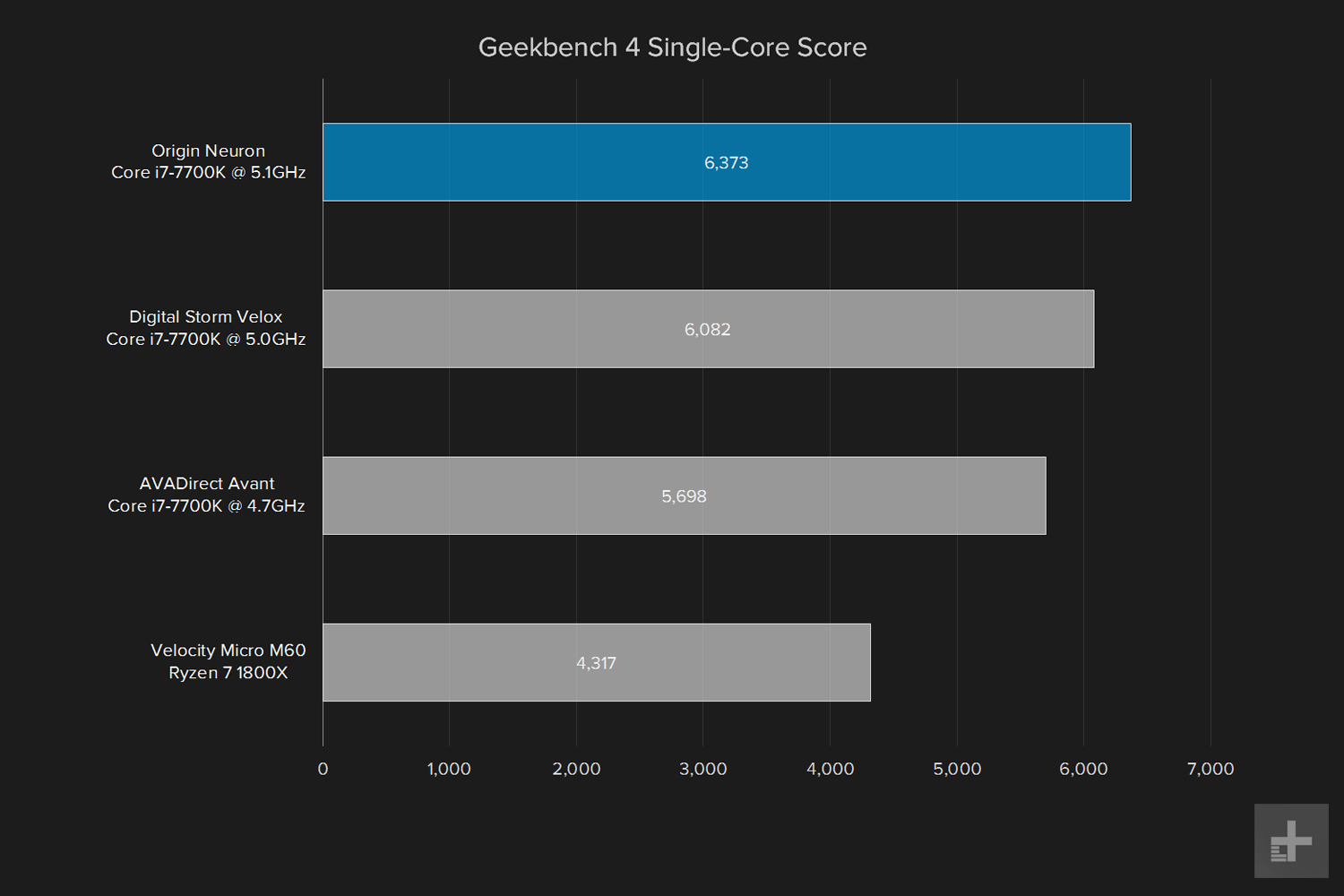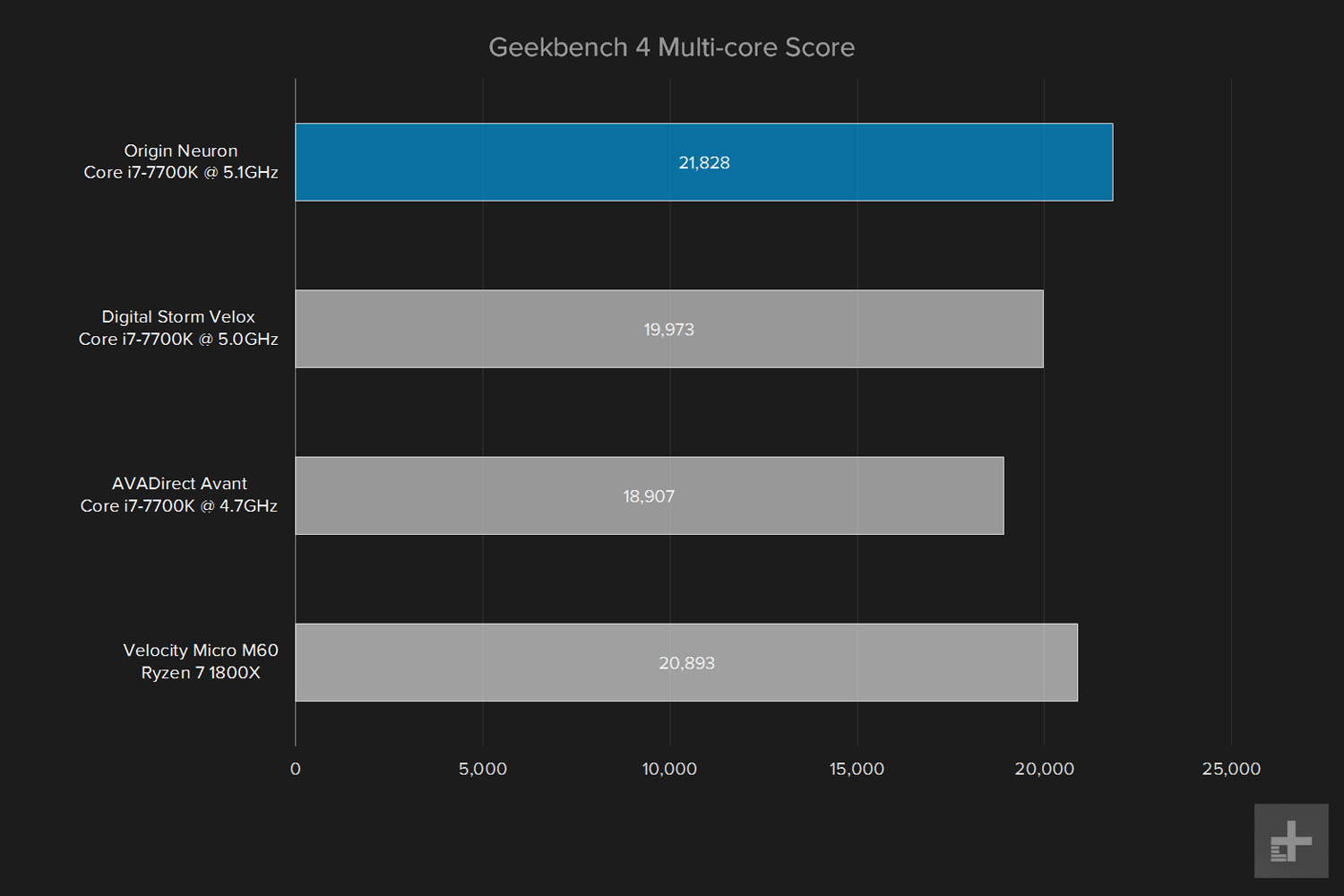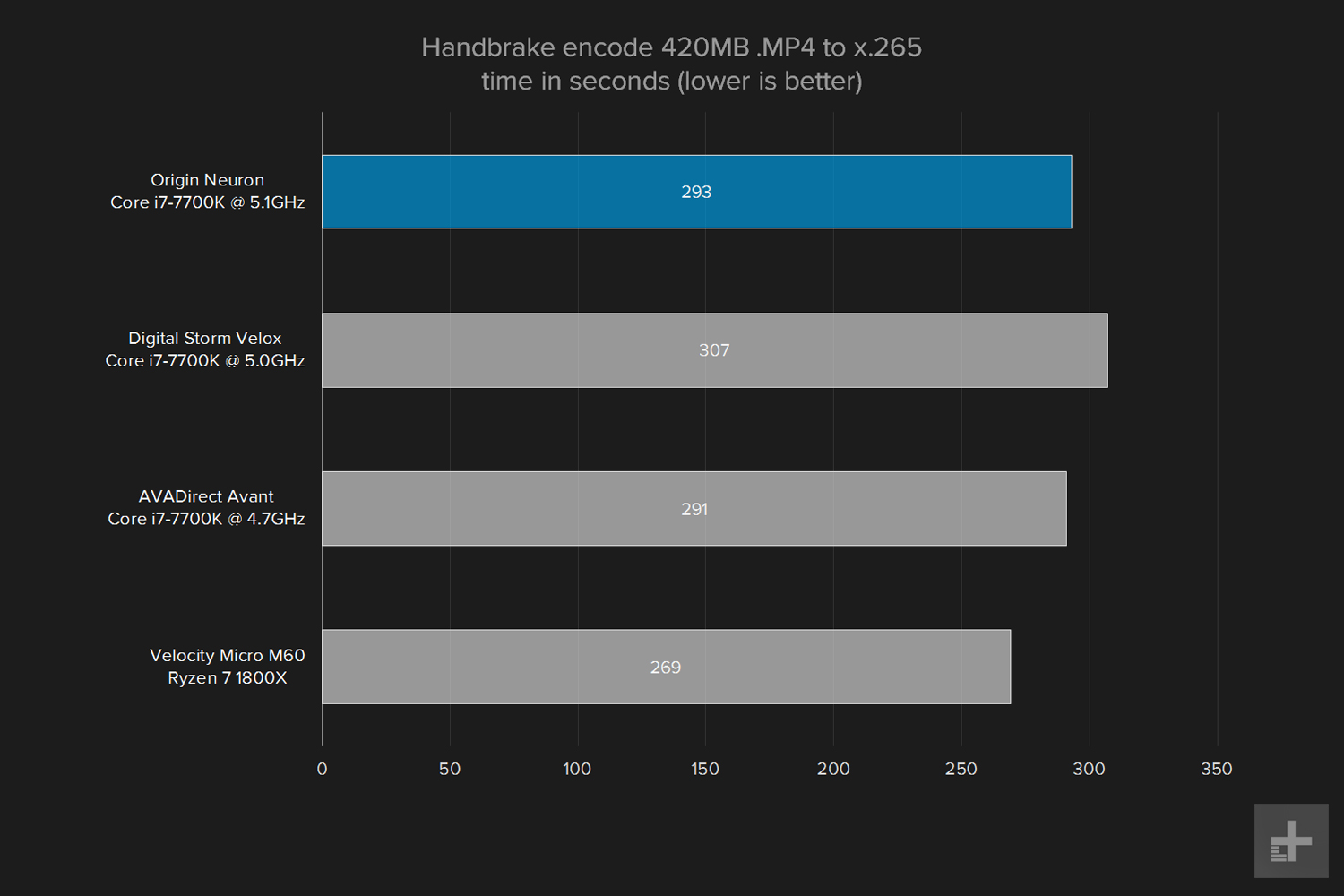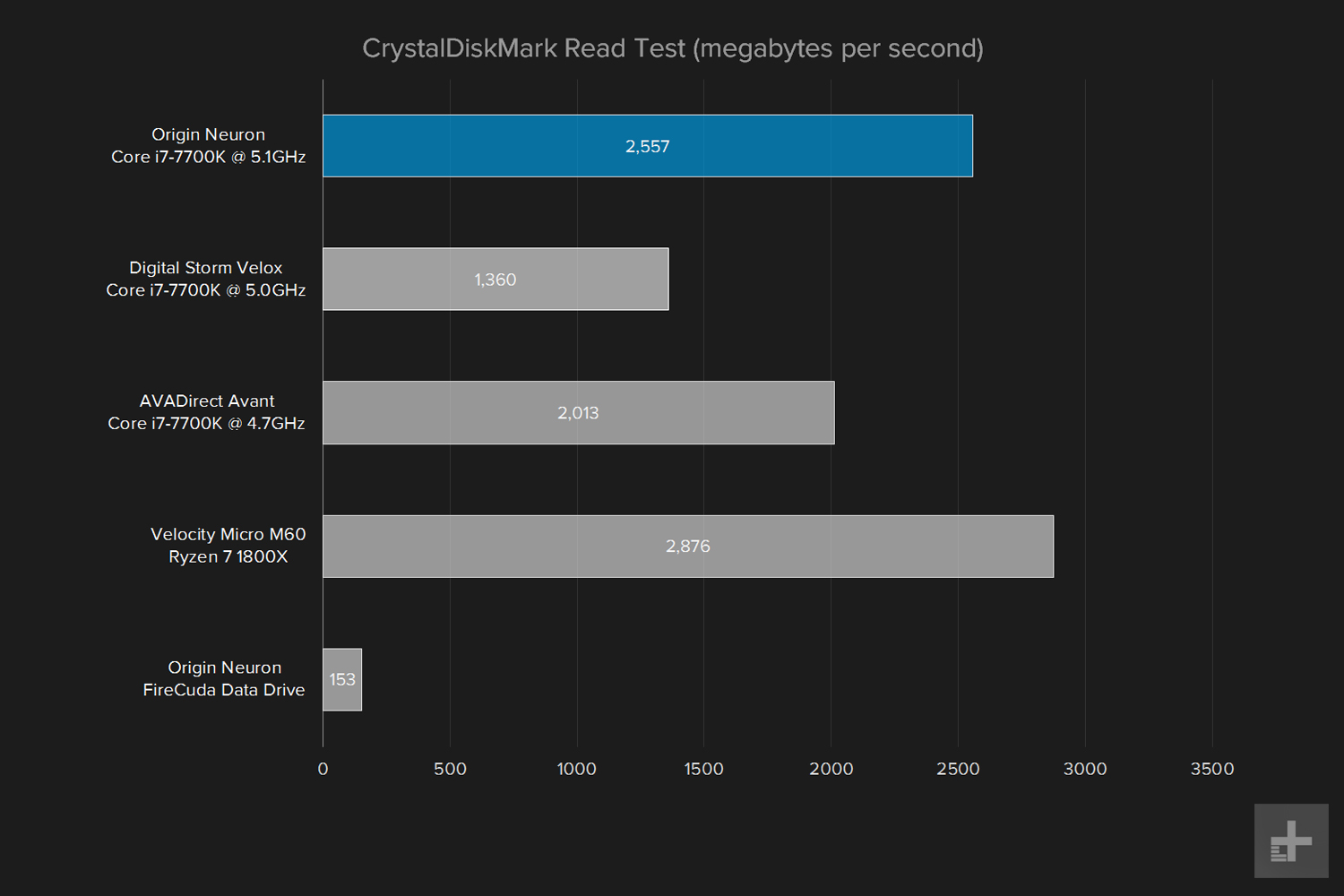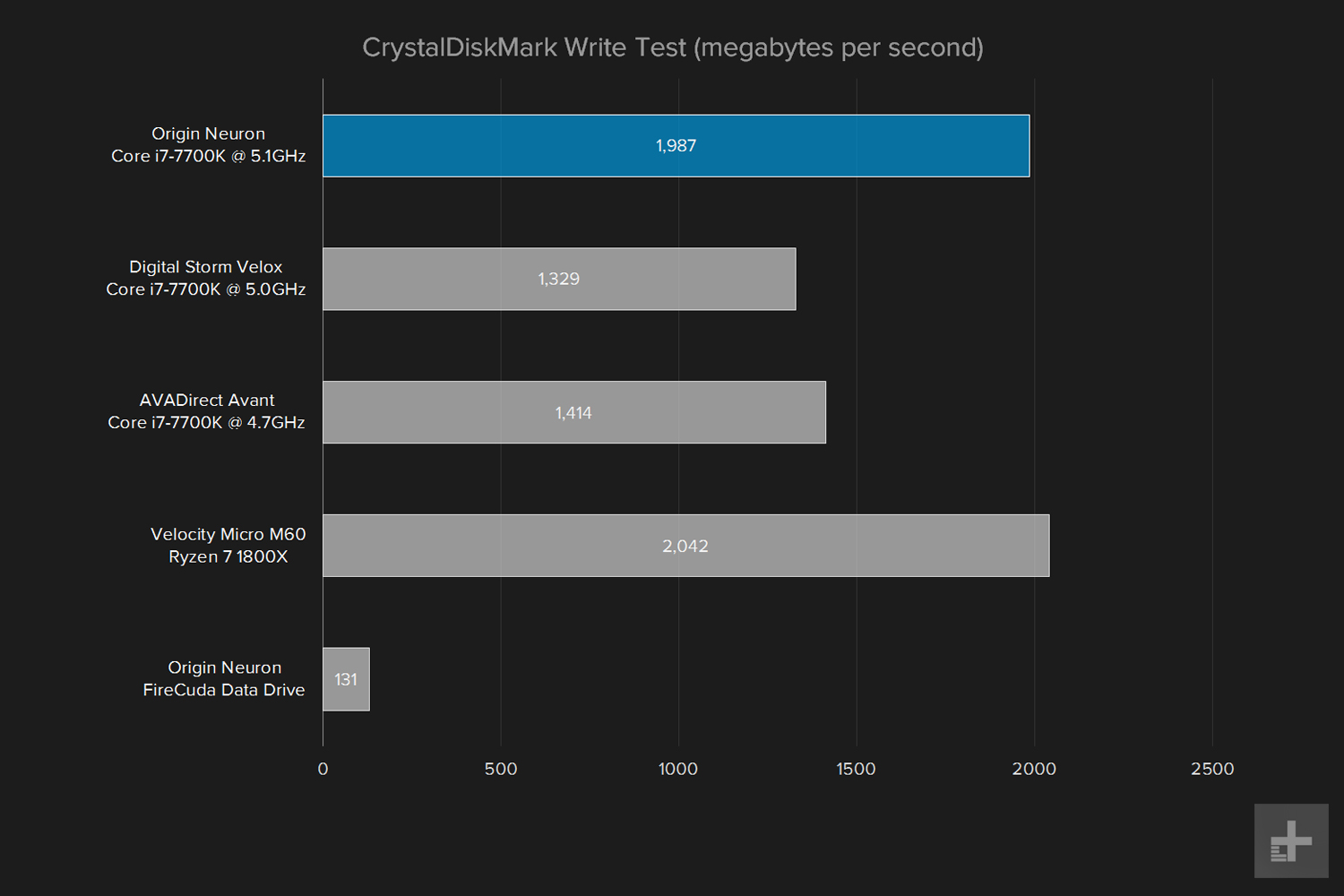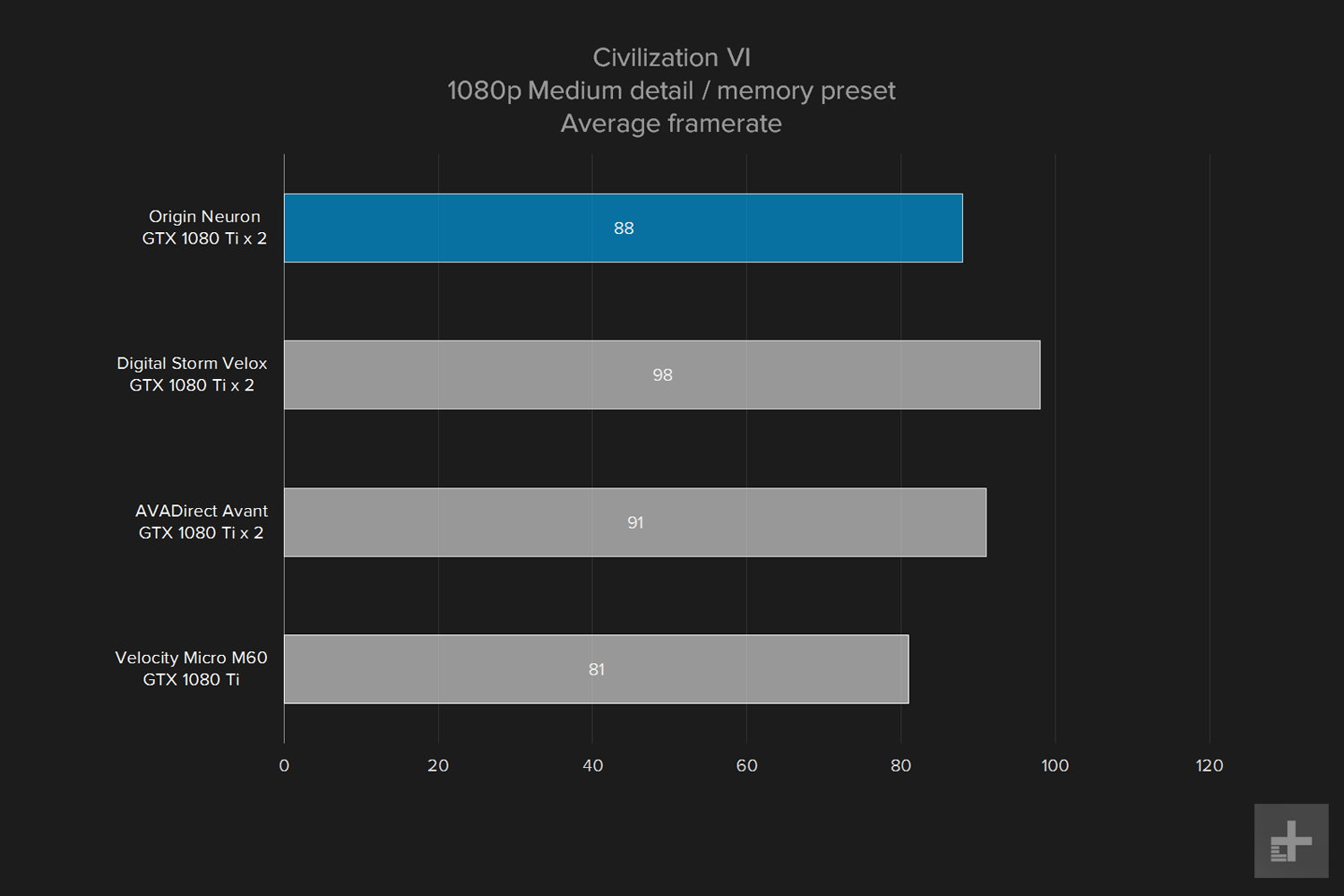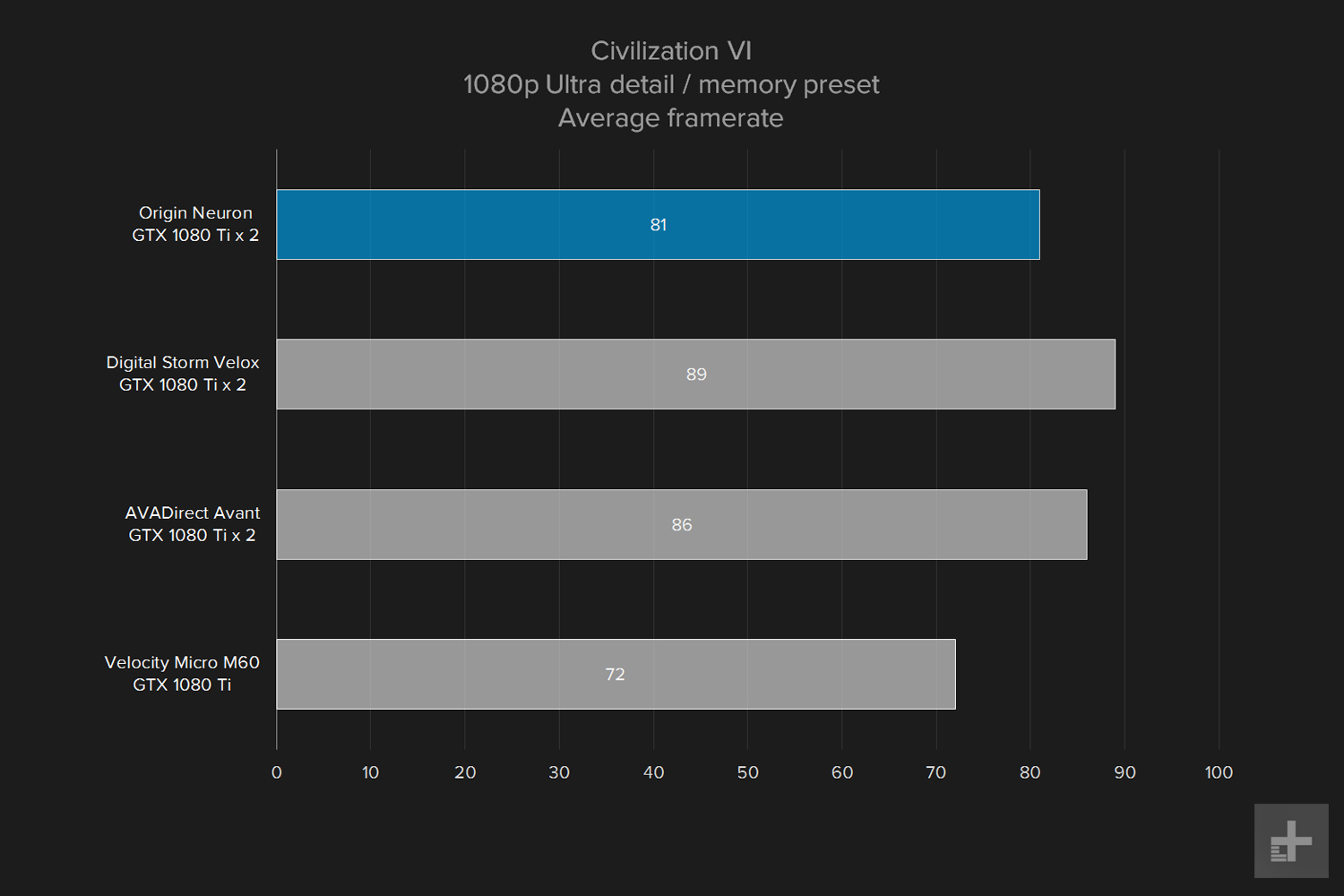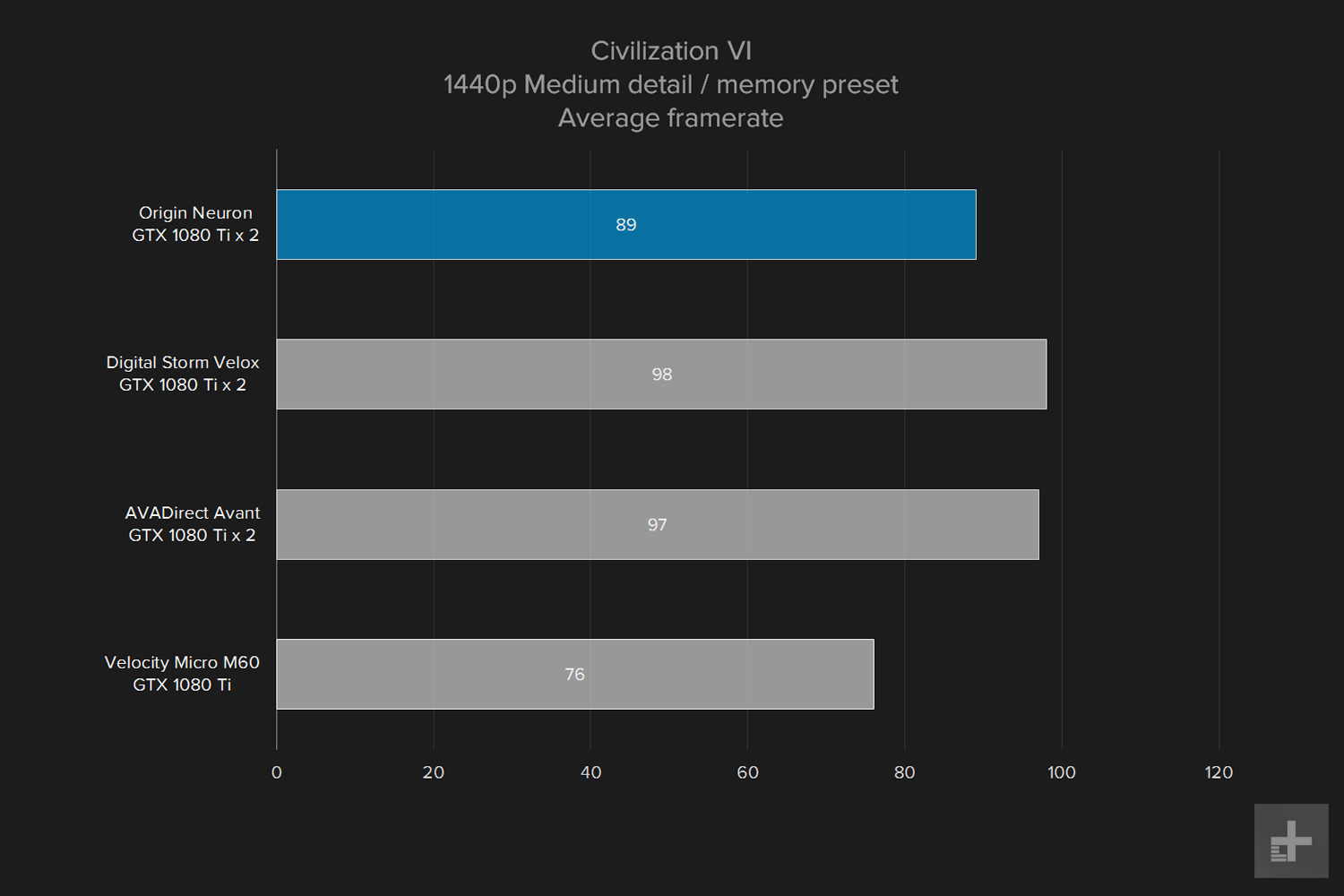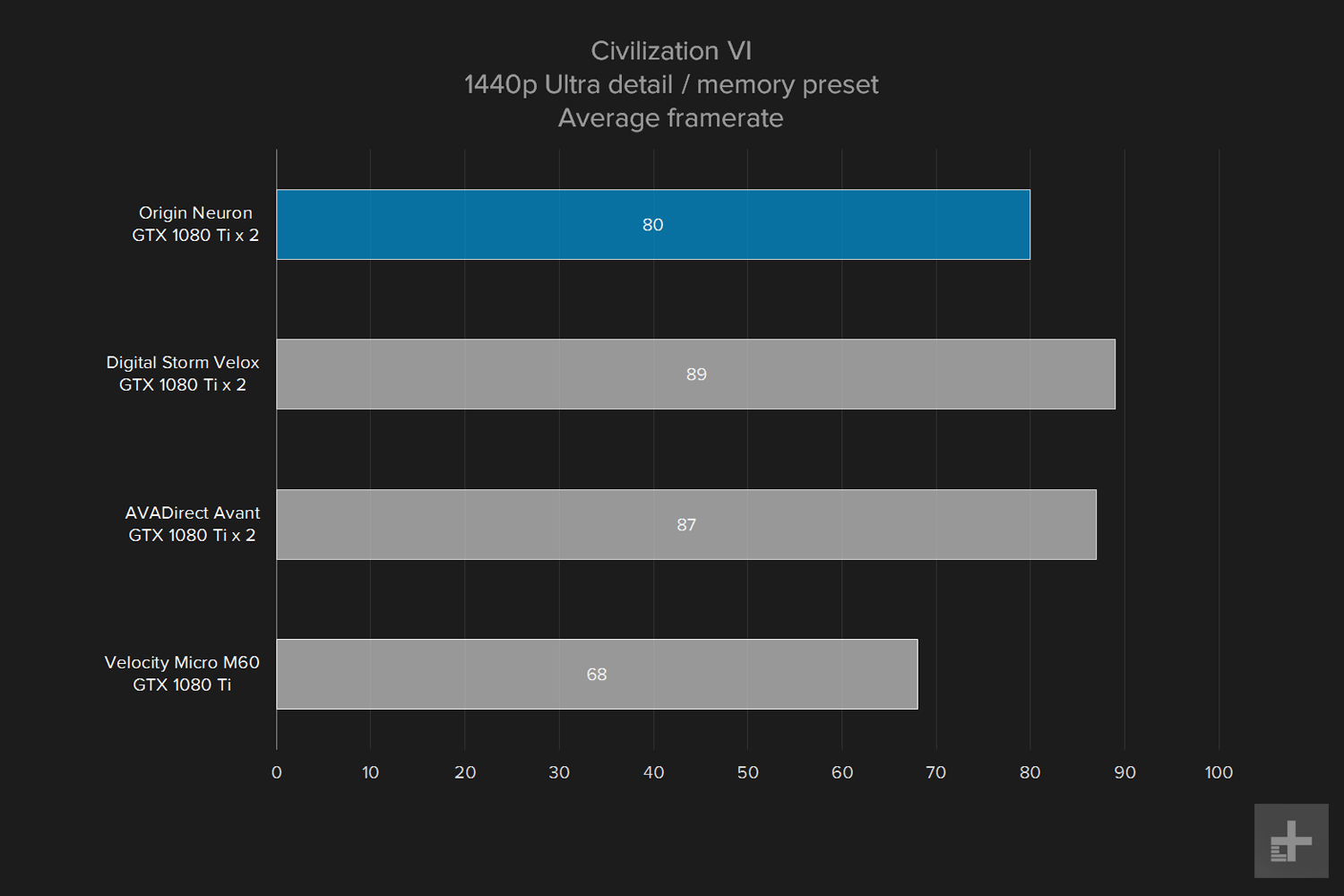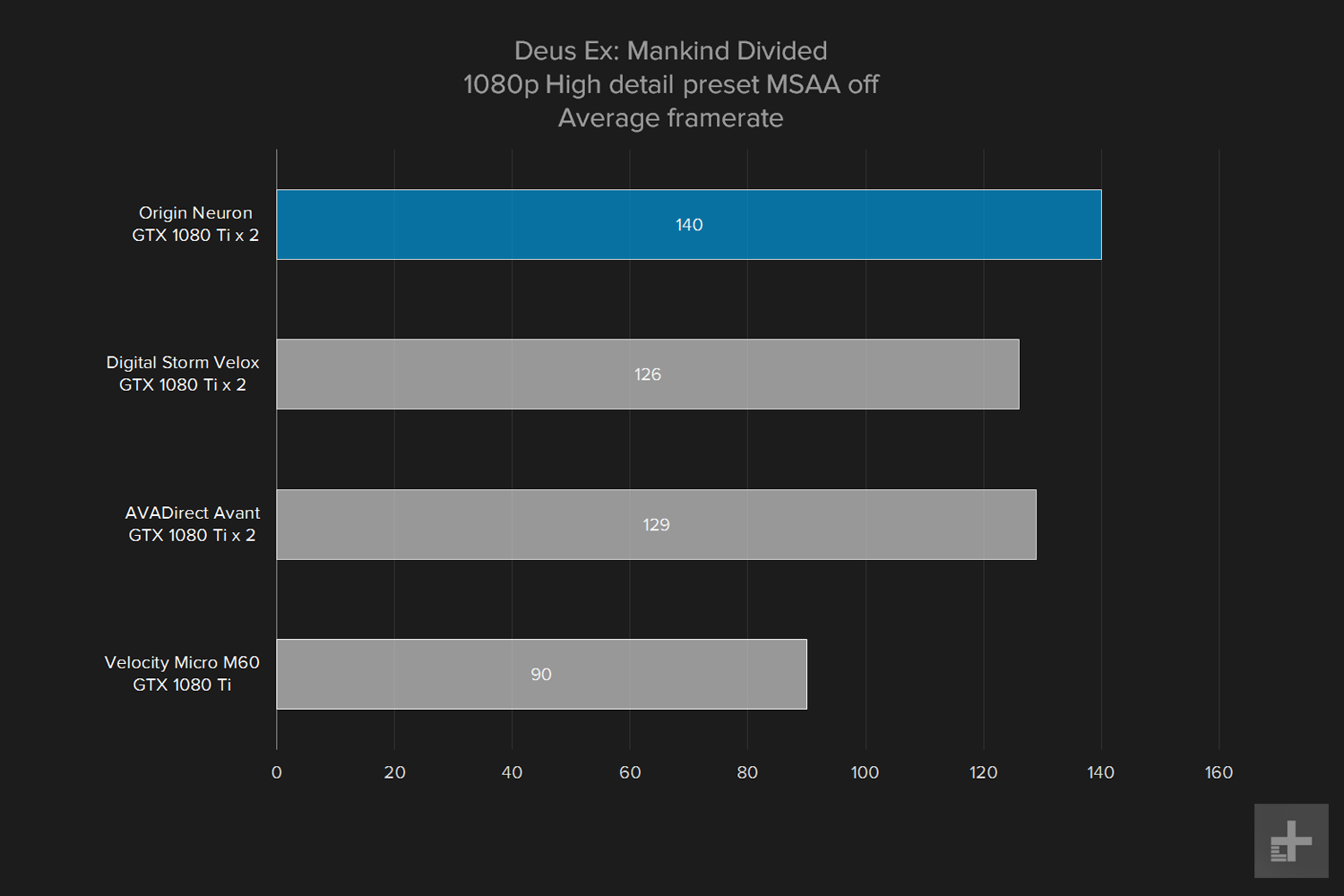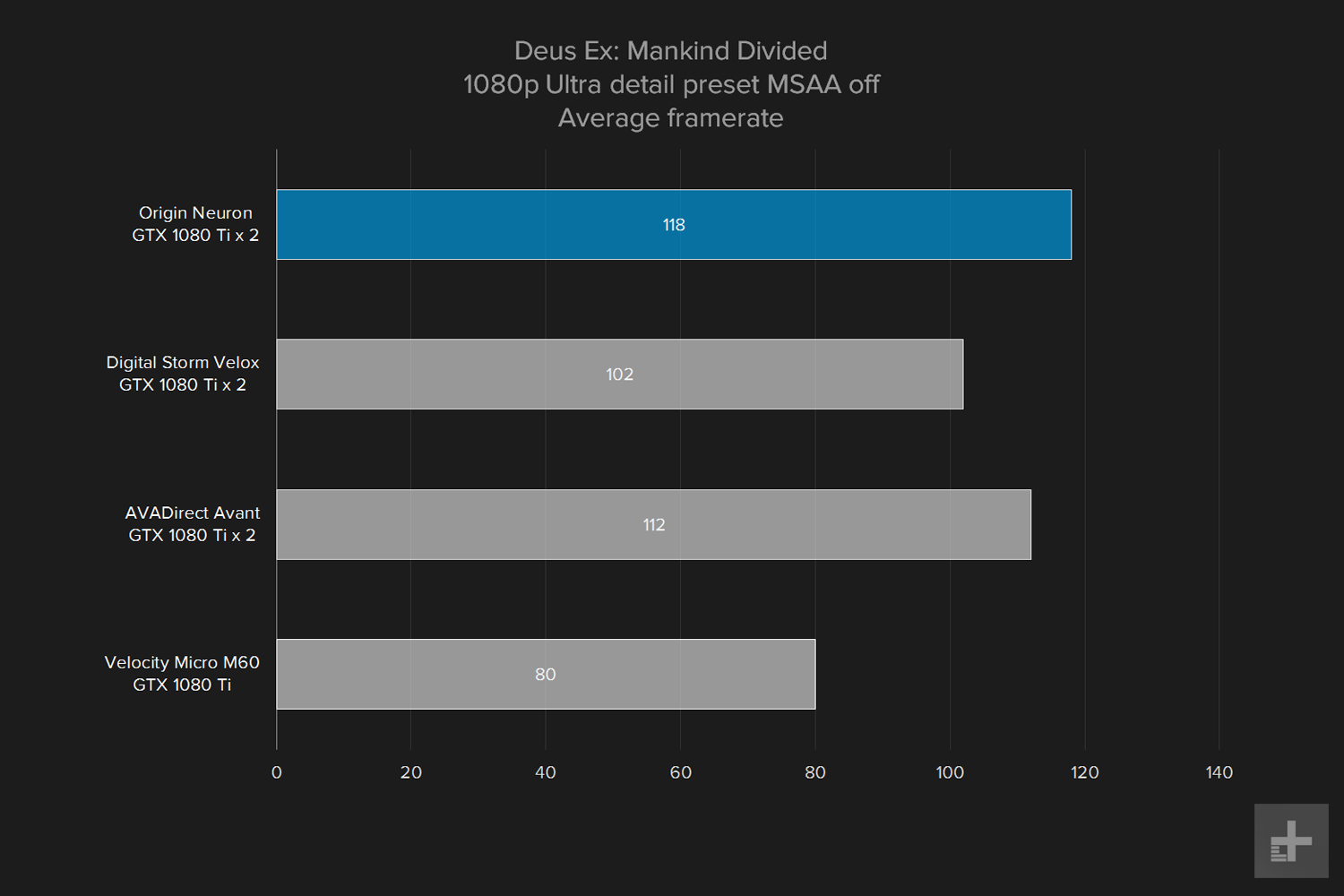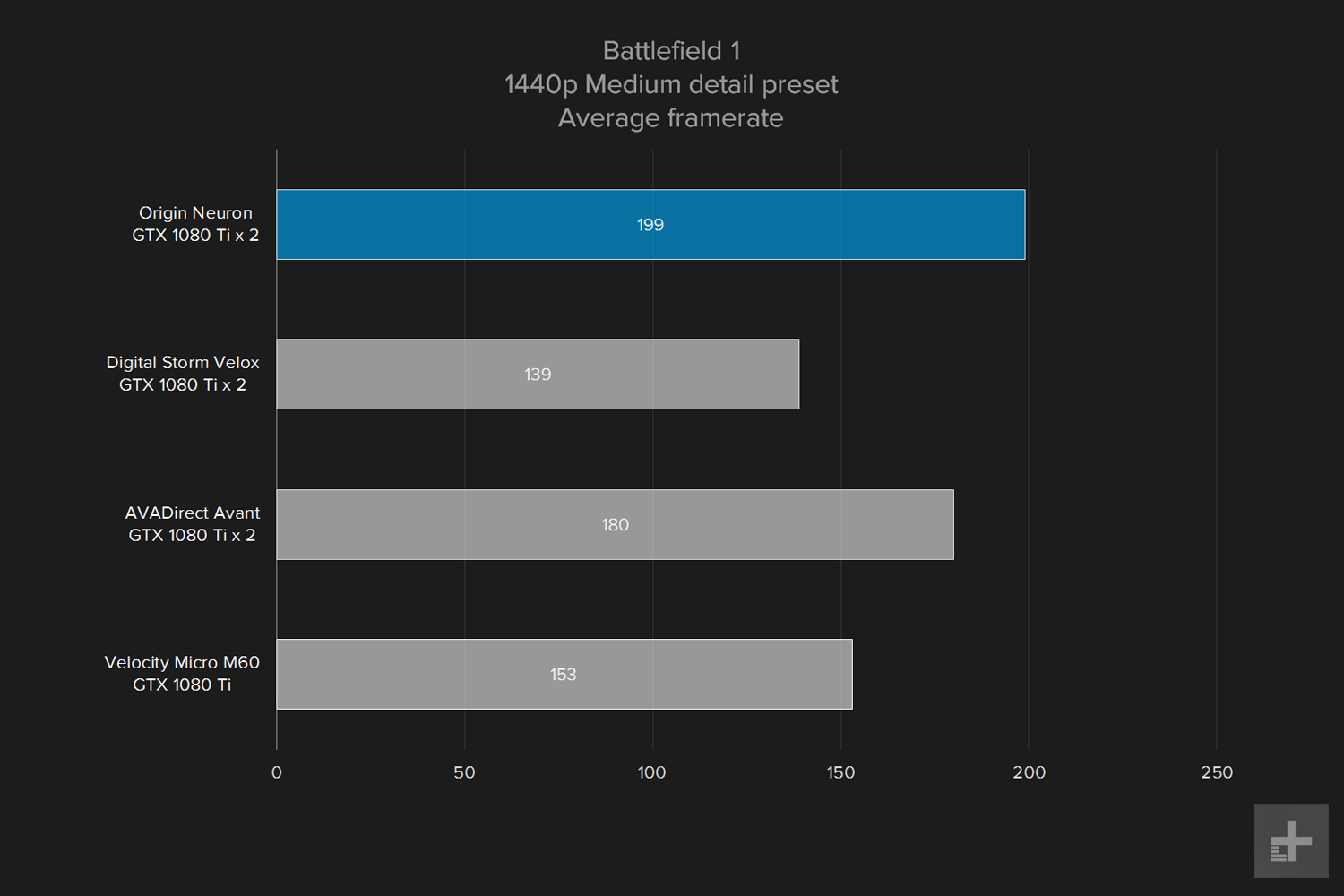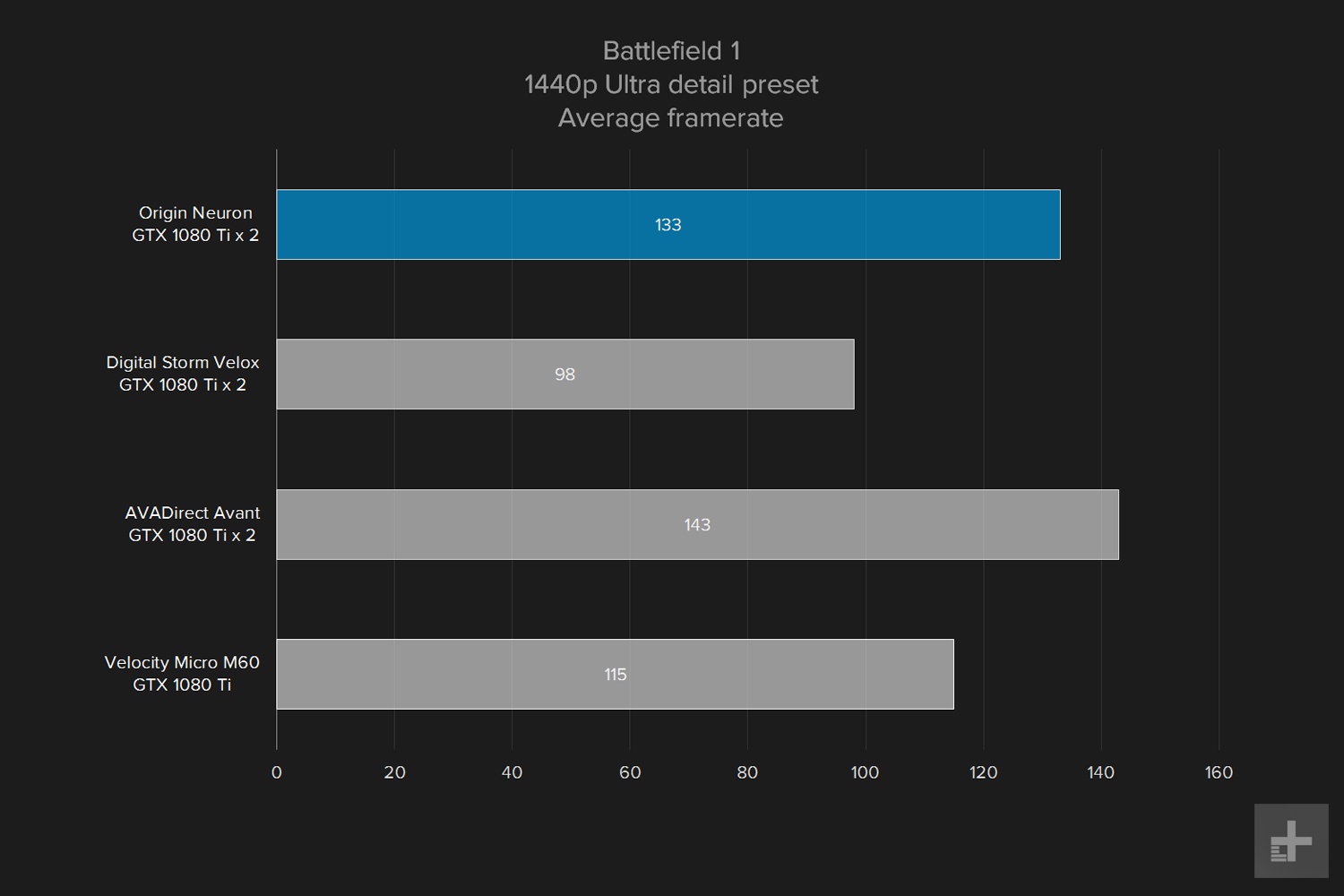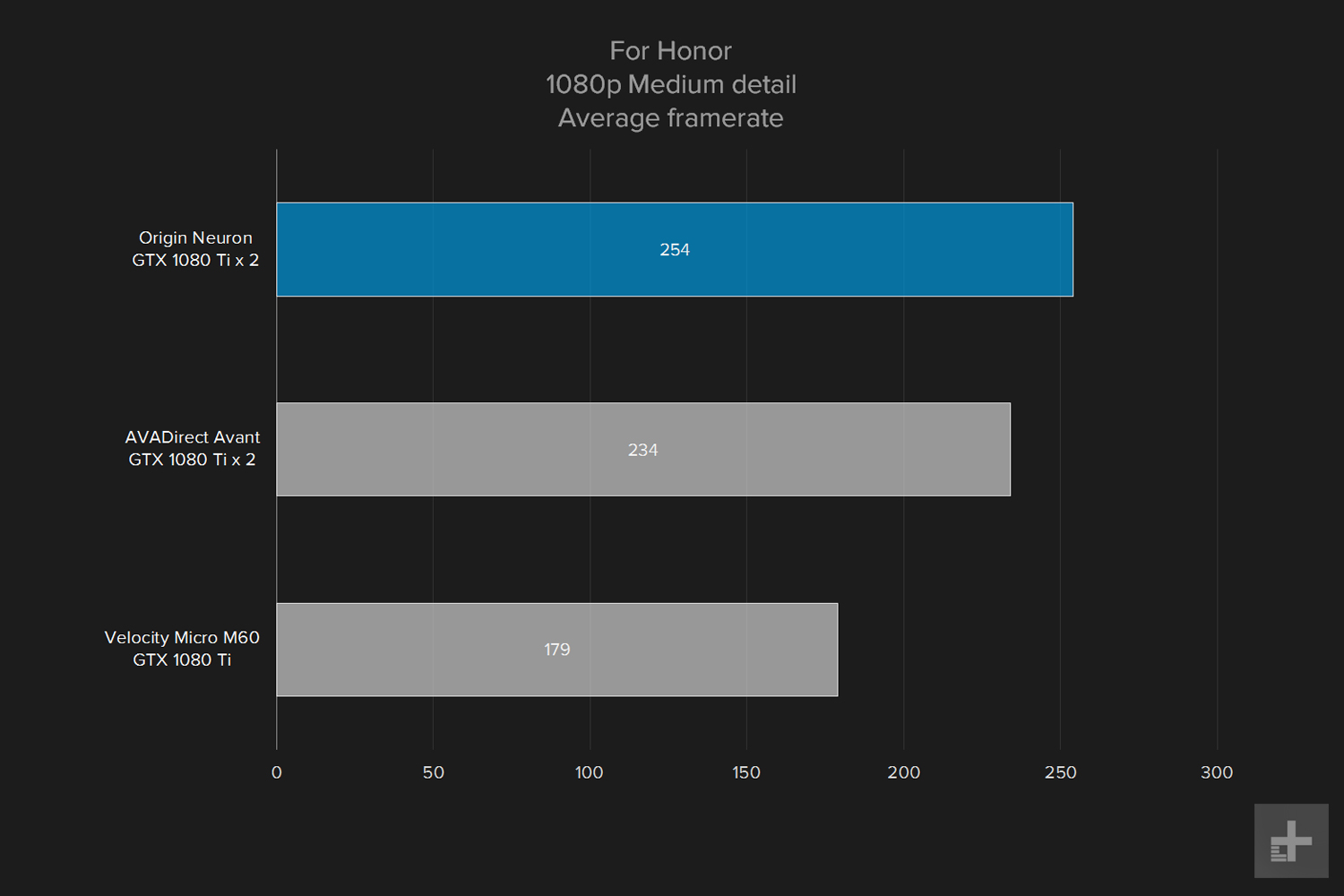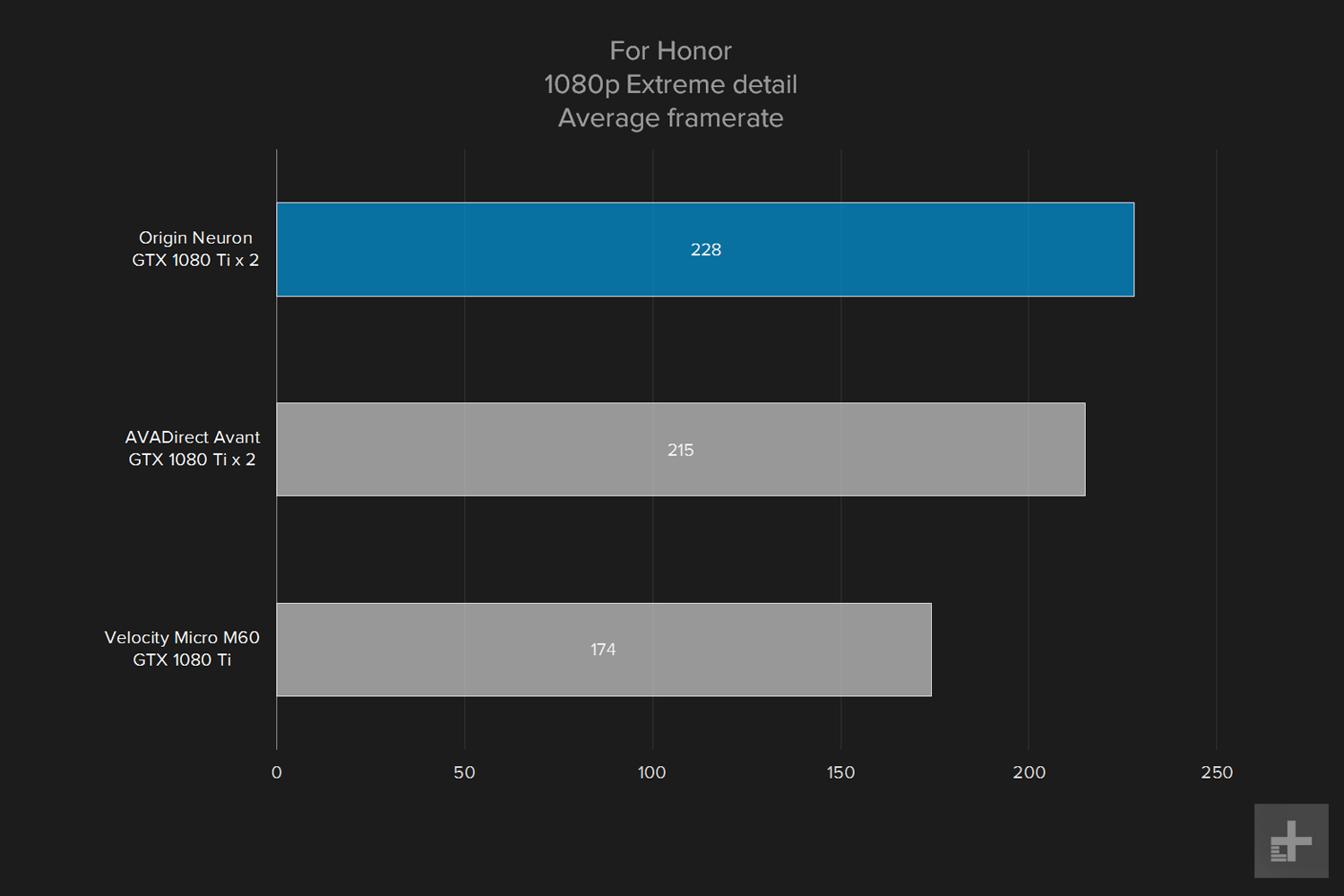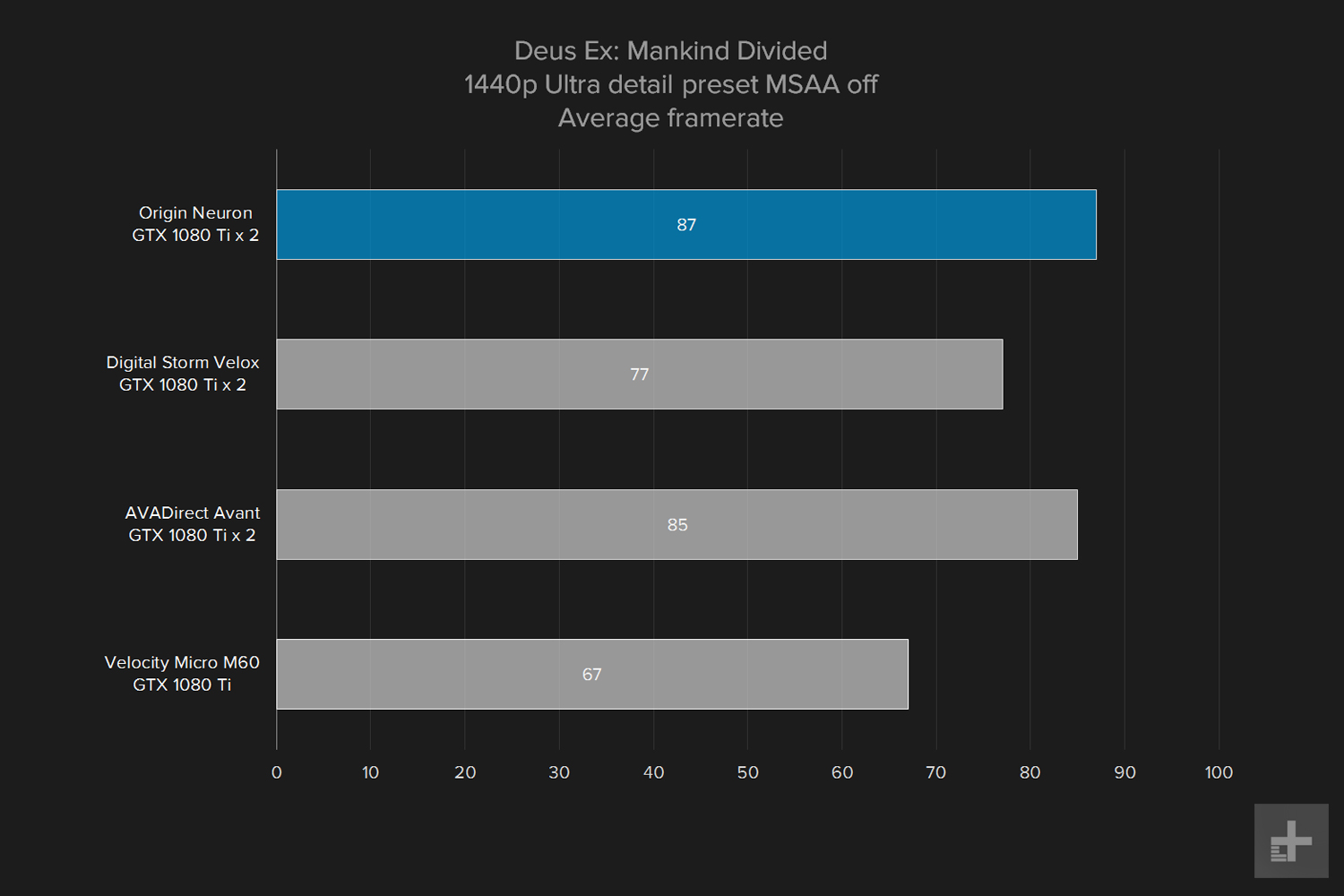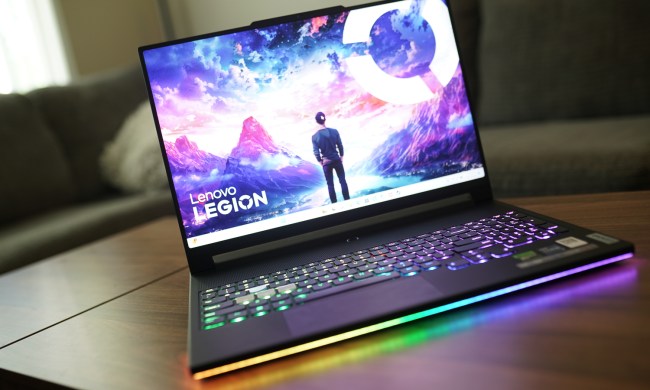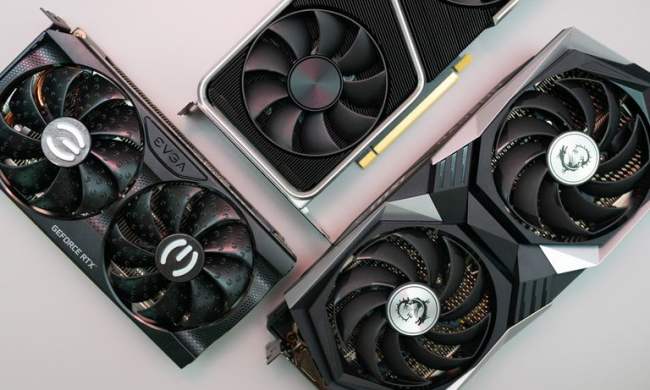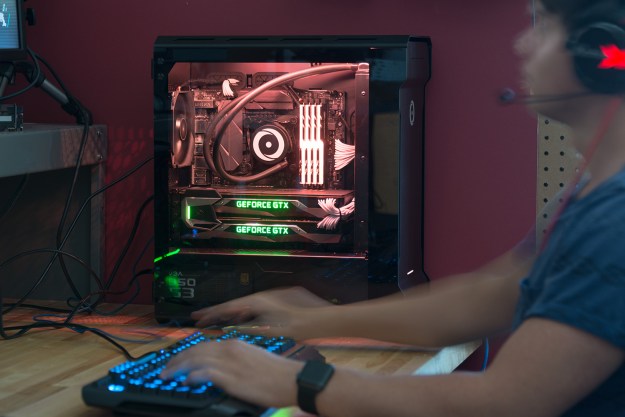
- Incredible overclocked performance
- Lightning-fast storage
- Extremely attractive
- Elegantly assembled
- Doesn’t have a custom enclosure
It’s always exciting when an Origin desktop lands in the Digital Trends test lab. With excellent enclosures, top-end hardware, and perfect assembly, the Origin Millennium held the top spot as our favorite gaming desktop until the Digital Storm Aventum dethroned it. Now, as our Origin Neuron review will show, the Origin team wants the crown back.
Fitted with an overclocked Core i7-7700K, 32GB of 3,000MHz memory, two GTX 1080 Tis, and a 512GB Samsung 960 Pro, it’s hard to imagine a better equipped gaming rig. It costs a healthy $4,200, which may sound like a lot, but as we’ll see, is quite reasonable.
There’s a lot more to building a hardcore gaming desktop than just slamming the most expensive parts in it, and few companies know that better than Origin. Is it time to name a new king?
A real looker
Origin uses a lot of custom enclosures for its systems, but the Neuron offers two off-the-shelf case options — the Phantek Evolv, and the Fractal Design Mini C. Both cases are quite popular, and our review unit arrived in the tempered glass version of the Phantek Evolv, a beautiful case with a unique look. It’s tough, elegant, and the build quality is top notch. There are no panel gaps to speak of, and there are little touches like cushioned magnets to hold the tempered glass in place without any screws.
We prefer seeing custom enclosures when we review a desktop this expensive, but the case Origin picked here is gorgeous. It also benefits from Origin’s attention to detail, which is evident in how the case lighting works. Origin has used parts that are all compatible with the Asus Strix motherboard’s built-in color management. From the G.Skill memory, to the fans, to the extra lighting, everything looks bright and cohesive. Competitors that focus less on the details, such as the AVADirect Avant, skip this important step.
Still, there are two small problems with the Phantek Evolv used for the Origin Neuron. The first is that, like any tempered glass case, it’s not exactly easy to move. It isn’t heavy, but there isn’t a good place to grab, or any handles, so it’s best if this system stays in one place. At least it’s compact for a gaming desktop, so it’s easy to hug and carry. Airflow can also be an issue, as the front of the case has a large, solid panel that only intakes from the side. Origin sidesteps the issue with a massive 360mm CPU radiator in the front that pulls a lot of air.
We do wonder if Origin will ever go with a custom case for it smaller systems, as it has in its mid-tower and full tower gaming systems. Yet the quality demonstrated in the Neuron proves even an off-the-shelf case can offer opportunity for artistry. The company went the extra mile here, and the result is a spectacular rig.
Plugs for days
Like other custom-built systems, port configuration will vary based on which motherboard and GPU you select while configuring the computer. Our review unit was fitted with the top-end options for both, so there was no shortage of wired and wireless connections.
A lot of custom system builders struggle with lighting, but Origin nails it.
The motherboard was an Asus ROG Strix Z270G, a Micro ATX board that didn’t sacrifice where it counts, with a full set of four DIMM slots running at up to 4,000MHz, two M.2 slots, and two PCIe 3.0 x16 slots. The back of the system featured four USB 3.1 gen 1, plus a USB 3.1 gen 2 with Type-A and Type-C, two USB 2.0, Ethernet, 6.1 and optical audio, HDMI, DisplayPort, plus 802.11ac 2X2 Wi-Fi and Bluetooth 4.1. The Phanteks case has an extra pair of USB 3.1 ports in the front, with audio in and out.
The pair of GTX 1080 Ti cards offers a wealth of high-end graphical outputs, with an important caveat. With the cards running in true Nvidia SLI, only the outputs on one card will work properly. That includes three DisplayPort and one HDMI. If you need more, you can disable SLI to drop the combined performance, but open the second card’s video outputs.
Easy access
Everything in the system is easily accessible, thanks to the off-the-shelf Phanteks case, which is designed with enthusiast builds in mind. A metal basement protects the PSU and extra cables, but it was easy to remove to grab some extra power. The swinging tempered glass side panels helped make access easy even without any tools.
Off-the-shelf cases may not be as unique as custom enclosures, but this one provides a lot for future upgrades. Custom built systems like the iBuyPower Revolt 2 look fancy, but can make accessing some parts a pain. The AVADirect Avant and Digital Storm Velox both have similar accessibility, but at the cost of a much larger chassis footprint.
Overclock it
We’ve seen Intel’s Core i7-7700K in a lot of high-end systems, often with a tall overclock over the chip’s 4.2GHz base clock and 4.5GHz Turbo Boost. Origin pushed our review unit’s chip to an astonishing 5.1GHz overclock, the overclock we’ve ever witnessed in a production desktop, thanks to a massive 360mm radiator at the front of the case. It was paired up with 32GB of G.Skill RAM. Let’s see how it fares in our benchmarks.
As expected, that extra 100MHz, and the gobs of fast RAM, helped propel the Neuron into the top spot in our system roundup. Only the Ryzen 7 1800X in the Velocity Micro M60 squeaks out a faster time in our Handbrake 4K conversion test, but it has twice the cores. Even the Digital Storm Velox, which sat at 5.0GHz, was a noticeable amount behind the Origin Neuron.
We should note that Origin charges $75 for overclocking. That’s on the high end for such service, and Falcon Northwest doesn’t charge for it at all.
Storage solutions
High-end systems deserve high-end storage, and the Neuron is no exception. The boot drive in our review unit was a screaming fast PCIe-powered Samsung 960 Pro 512GB, and there are two 2TB flash-accelerated FireCuda data drives standing right behind it, waiting for extra files.
Holy cow. We’re no stranger to the 960 Pro, but we’re impressed by these scores. Only the Velocity Micro, also equipped with Samsung’s best, manages to squeeze ahead of the Neuron. Why one performs better is up for debate, although faster PCIe and M.2 drives often benefit from plenty of airflow, which could be the culprit. Either way, both drives are insanely fast, and users can look forward to near-instant boot and load times.
More power than ever
With the serious work out of the way, it’s time to check out the gaming. Our review unit was equipped with a pair of GTX 1080 Ti GPUs which is the most allowed , the most graphical power you can pack into a consumer machine. That equals a whopping 22GB of video memory across both cards, and a whole lot of horsepower. Both cards were Founders Edition units with blower fans, which Origin also took the time to overclock.
Once again, the Neuron surprises us by passing 30,000 in 3DMark’s Fire Strike benchmark. It was the first system we’ve had through the lab to do so. Now that we’ve seen what it can do in synthetic tests, let’s check out some real gaming.
Setting aside Civilization VI, the Origin Neuron claimed the top spot, with a few exceptions, in every other game in our test suite. It never dropped below a 60 frame per second average at 1440p, even in Deus Ex: Mankind Divided, with the settings on ultra. Only systems in the upper performance echelon have claimed that honor.
Let’s return to Civilization VI for a moment. We’ve found that not only is the game more CPU intensive than most titles, but it only takes advantage of one GPU. Even without the help of the second card, the Neuron held its own well, but traded blows with the other systems that had at least one GTX 1080 Ti.
Just the essentials
The seriously fast and sexy Origin Neuron managed to impress us at every turn
Origin systems have typically arrived sporting very little apart from the operating system and its included utilities. The Neuron had a bit more installed on it this time around, but it’s all good stuff. A small handful of unobtrusive Asus ROG applications handled the system lighting, thermal management, and smart caching, while EVGA Precision XOC managed overclocking on the GPUs. These are all necessary programs likely to show up on any high-end gaming rig.
Warranty
Origin offers a variety of warranty services with its custom-built systems, and all of them include lifetime technical support and free labor. The most basic offering also provides one year of replacement parts, and Origin will cover shipping for the first 45 days. Upgrades bring that shipping coverage up to one year, and extended the replacement and free shipping up to three years.
Digital Storm offers a similar warranty, with three years of free labor, but only one year of free parts. Shipping is covered for the first 60 days, which is two weeks more than Origin. AVADirect offers a stronger three-year warranty with the Avant, which is definitely above average for the category. Falcon Northwest also offers a three-year warranty for most of its systems at a similar price point.
Our Take
The seriously fast and sexy Origin Neuron managed to impress us at every turn, even without Origin’s attractive custom enclosures. Its Core i7-7700K, two GTX 1080 Tis, and 32GB of colorful RAM are exactly the sort of parts you’d find in a rig built by an experienced home user. Plus, the CPU and GPU are overclocked as only a team of engineers with access to a pile of chips and a solid test bench can.
Is there a better alternative?
There’s no shortage of competing products, but it’s hard to find one that’s strictly better. The Digital Storm Velox doesn’t quite squeeze the same performance out of identical parts, and it costs $800 more, while taking up almost twice the space. The AVADirect Avant is also quite large, and had performance at the same price point as the Neuron, but it has its own issues. At just under $4,200, the Origin Neuron is the supreme choice for performance seekers in tune with current trends.
How long will it last?
With a lofty overclock and a huge excess of graphical power, we have no doubt the Origin Neuron can weather increasing gaming and processing demands while keeping its cool. So will any system at the price point, however. That’s what you get for spending more on a gaming rig.
Should you buy it?
Absolutely. The Origin Neuron takes all the power of more expensive machines, and chops the price down, while cutting the footprint. It’s attractive, powerful, customizable, and a surprisingly good deal, even if it doesn’t sound like it. Origin has put a lot of time and care into crafting the perfect gaming desktop, and the Neuron is damn close.





